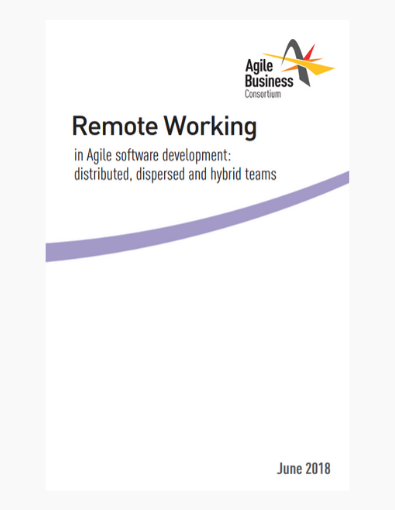Remote Working Templates
Remote working is a fact of life. Although co-location is the gold standard for agile teams, there are circumstances when such co-location is unfeasible.
Remote working comes in three main flavours:
- distributed teams, where a number of co-located sub-teams are located in different places,
- dispersed teams, where individuals are distributed in different places, and
- and hybrid teams, where a largely co-located team also includes a number of remote workers.
Distributed teams are more common than dispersed or hybrid and have been studied more fully. All three situations face challenges (pain points), many of which are common in all remote working situations, but some pain points are more painful for certain circumstances.
How To Guides
Our Remote Working Individual template is designed to be used in order to track progress and set goals whilst working across any type of dispersed team. We would recommend updating and sharing your plan with your colleagues on a weekly basis in order to maintain a sense of communication, collaboration and accountability when remote working.
Team leaders can easily collate individual remote working plans into one document using our Remote Working Team Overview template and this can be made visible to the team. This transparency helps build team trust and ensures every team member is working and progressing to their individual and organisational goals.
This guide is not prescriptive and can be used alongside other tools such as virtual Kanban boards and sprints. The Consortium team have found this provides a clear snapshot of the week’s goals, whilst keeping everybody in the loop on projects they are not involved in first-hand.

Remote Working Pocketbook
Agile software development advocates the use of small co-located teams to help reduce misunderstanding, aid face-to-face communication and improve decision-making. The benefits of co-location have been known for many years, and in the early days of Agile working, this co-location principle was stubbornly adhered to. Yet the business reality for many organisations means the use of outsourced developers, third party external specialists or geographically scattered team members. Co-location is not practical in many cases and for various reasons, including the need for specific expertise, and cost, leading to remote working in one form or another.
This pocketbook considers three flavours of remote working: distributed teams, dispersed teams and hybrid teams. The Agile Research Network (ARN) summarise the pain points faced in these different situations and present some key strategies to address them. Distributed teams are the most common form of remote working and many of the issues here are well-known. Less well-known are the other two forms of remote working. For these the ARN draw on two case studies, one for each, to illustrate this specific circumstance.
